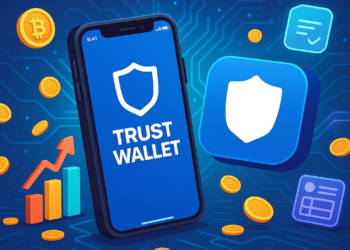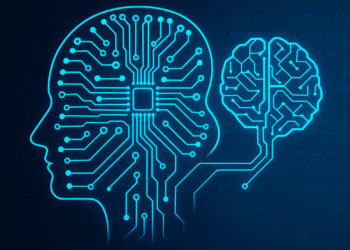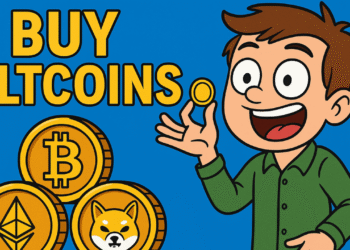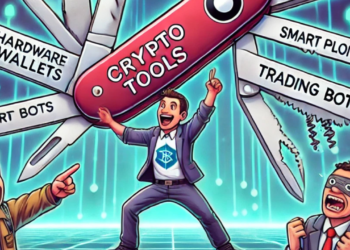Stablecoins have become a fundamental part of the cryptocurrency ecosystem, providing a reliable store of value amidst market volatility. They offer traders, investors, and decentralized finance (DeFi) users a stable alternative to volatile assets like Bitcoin and Ethereum. However, despite their apparent stability, stablecoins raise important questions about decentralization and security. Are stablecoins like USDT and USDC truly safe, or does centralized control pose a risk? In this article, we take a critical look at centralized stablecoins and explore alternative options like DAI and Frax.
The Centralization Problem in Stablecoins
Most stablecoins in the market today are centralized, meaning they are controlled by a single entity that issues and manages the assets. This introduces a range of concerns, including:
- Regulatory Risk – Centralized stablecoins such as Tether (USDT) and USD Coin (USDC) are subject to government regulations. Regulatory bodies can impose restrictions, freeze accounts, or enforce compliance measures that may impact their stability and accessibility.
- Counterparty Risk – Since centralized stablecoins rely on third-party reserves, users must trust that the issuer truly holds the assets backing the stablecoin. Tether, for example, has faced scrutiny regarding the transparency of its reserves.
- Censorship and Freezing of Funds – Issuers of centralized stablecoins have the power to freeze assets or blacklist wallets. This undermines the decentralized ethos of cryptocurrency and raises concerns about financial censorship.
- Single Point of Failure – Centralized control creates a vulnerability where a regulatory crackdown, financial mismanagement, or legal action could disrupt the stablecoin’s value and usability.
USDT and USDC: How Centralized Are They?
Tether (USDT)
Tether is the most widely used stablecoin, with billions in market capitalization. However, it has faced significant controversy regarding its reserves and transparency.
- Reserves Transparency: Tether has been criticized for a lack of fully audited reports verifying its reserves.
- Regulatory Issues: Various legal challenges have raised concerns about Tether’s compliance with financial regulations.
- Centralized Control: Tether’s parent company has the authority to freeze funds, as seen in past cases where wallets were blacklisted.
USD Coin (USDC)
USDC, issued by Circle and backed 1:1 by U.S. dollar reserves, is considered more transparent and compliant than Tether.
- Regulatory Oversight: USDC is regularly audited and complies with U.S. financial regulations.
- Censorship Risks: Like USDT, USDC can be frozen by its issuing company, restricting access for certain users.
- Stable but Centralized: While USDC provides stability, its central control contradicts the decentralized ideals of cryptocurrency.
Decentralized Alternatives: DAI and Frax
To address the risks of centralized stablecoins, decentralized alternatives have emerged. These stablecoins operate through smart contracts and decentralized governance rather than relying on a single issuing entity.
DAI: The Leading Decentralized Stablecoin
DAI is an Ethereum-based stablecoin managed by MakerDAO, a decentralized autonomous organization (DAO). Unlike USDT or USDC, DAI is backed by crypto assets locked in smart contracts.
- Decentralization: DAI is governed by a distributed network of MKR token holders who vote on key decisions.
- Over-Collateralization: DAI maintains stability by requiring users to deposit more collateral than the value of the DAI issued.
- No Central Authority: There is no single entity controlling DAI, making it resistant to censorship or asset freezing.
Frax: A Hybrid Approach to Stability
Frax is an algorithmic stablecoin that blends collateralization with algorithmic adjustments to maintain its peg.
- Partially Collateralized: Unlike fully fiat-backed stablecoins, Frax maintains stability by dynamically adjusting its collateral ratio.
- Decentralized Governance: Frax is governed by FXS token holders, ensuring community-driven decision-making.
- More Capital Efficient: Frax uses a fractionally reserved model, reducing the need for excessive collateral backing.
Comparing Centralized vs. Decentralized Stablecoins
| Feature | USDT / USDC (Centralized) | DAI (Decentralized) | Frax (Hybrid) |
|---|---|---|---|
| Control | Centralized (single issuer) | Decentralized (DAO governance) | Hybrid governance |
| Reserves | Fiat-backed (USD reserves) | Crypto-backed (over-collateralized) | Partially collateralized |
| Regulation | Subject to government rules | Resistant to regulation | Limited regulatory impact |
| Censorship | Funds can be frozen | No centralized control | Less susceptible to censorship |
| Transparency | Audited, but centralized | Fully transparent smart contracts | Algorithmically transparent |
The Future of Stablecoins and Decentralization
The demand for decentralized stablecoins is growing as users become more aware of the risks associated with centralized control. However, challenges remain:
- Adoption Barriers: Centralized stablecoins dominate the market due to their ease of use and liquidity.
- Regulatory Pressure: Governments may impose stricter regulations on decentralized stablecoins.
- Scalability Issues: Decentralized models require innovations to improve scalability and efficiency.
As blockchain technology advances, the balance between stability, decentralization, and regulatory compliance will continue to shape the future of stablecoins.
ConclusiC may be preferable. However, if safety is defined as censorship resistance and decentralization, then DAI and Frax offer a more robust alternative.
For long-term adoption, decentralized stablecoins will need to improve scalability and governance while ensuring stability. The best choice ultimately depends on an individual’s needs—whether prioritizing ease of use or true financial sovereignty.
Disclaimer: This article is for informational purposes only and should not be considered financial advice. Always conduct your own research and consult with a professional before making any investment decisions.on: Which Stablecoin is Truly Safe?
The answer depends on how one defines safety. If security means regulatory compliance and fiat backing, centralized stablecoins like USD










